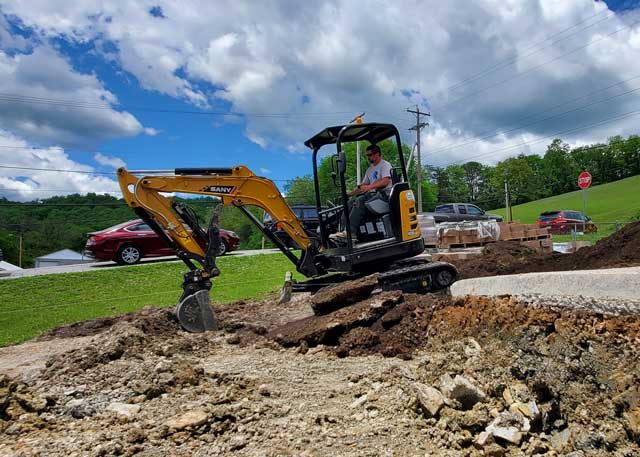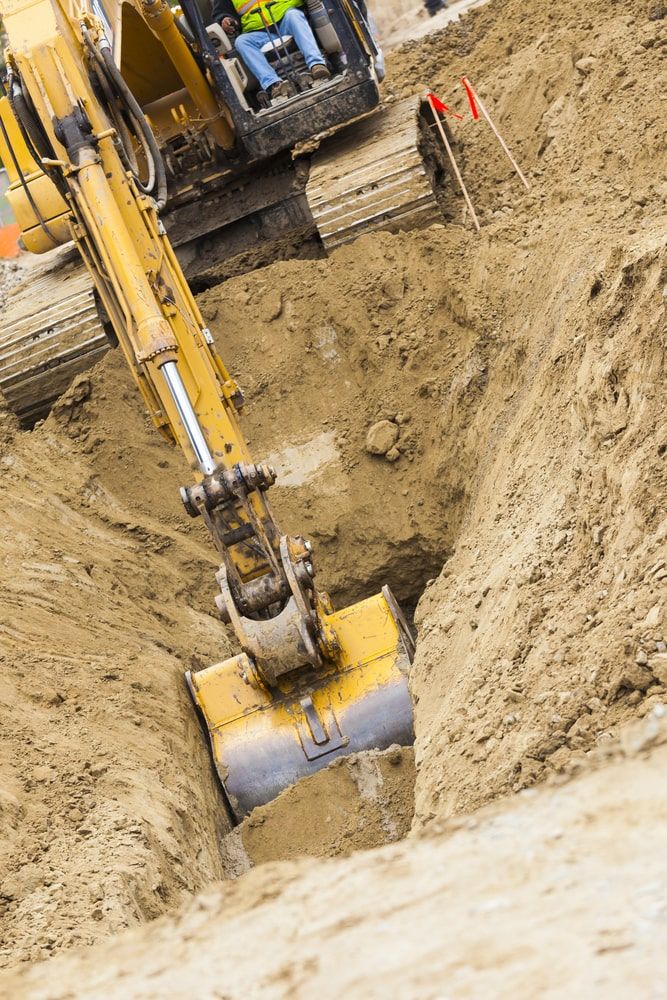Residential Excavating Ohio - Specialized Excavation for Ohio Houses
Introducing the Art of Excavation: Pro Tips for Safe and Productive Excavating
As dirt is transformed and earth is relocated, the complexities of excavation expose themselves, requiring a keen understanding of tools, dirt make-up, safety and security protocols, and ecological considerations. The experience needed to browse these components successfully can indicate the difference in between an effective excavation task and a potential disaster.
Relevance of Proper Devices
To make certain the security and effectiveness of any excavation task, using the suitable devices is vital. The right tools not only boost productivity however also mitigate dangers associated with digging. Excavation tasks vary in extent and complexity, varying from little household landscaping jobs to large-scale construction endeavors. Regardless of the task size, having the correct devices can make a substantial difference in the outcome.
Excavators are basic items of machinery in any kind of excavating procedure. These functional machines come in different dimensions to match various project needs. Mini excavators are suitable for smaller jobs, while bigger excavators take on a lot more substantial tasks efficiently. Backhoes are another crucial tools type, combining the features of a loader and an excavator in one device. They are important for jobs requiring convenience and ability to move.
Bulldozers stand out in tasks that require pushing big quantities of dirt or debris. By spending in the ideal equipment, excavation jobs can be finished securely, on time, and with precision.
Understanding Dirt Composition
An extensive understanding of dirt make-up is fundamental for implementing excavation jobs with accuracy and safety and security. Comprehending the various kinds of dirt is vital as it straight affects excavation methods, equipment option, and total job efficiency.
Sand particles are the biggest and supply good water drainage however use little cohesion. Silt particles are smaller sized than sand but bigger than clay, using modest water drainage and cohesion. Clay bits are the tiniest and supply high communication but bad drain. Raw material, such as rotting plant material, influences soil fertility and security.
Before commencing excavation, carrying out dirt examinations to determine its make-up and characteristics is important. This details aids in selecting the suitable equipment, carrying out precaution, and establishing excavation approaches customized to the details dirt problems - septic ohio. By understanding dirt composition, excavation professionals can enhance job results while making sure security and adherence to ideal techniques
Security Procedures and Procedures
Understanding soil structure is the cornerstone upon which security measures and protocols for excavation projects are developed, making sure the wellness of employees and the success of the venture. When it comes to safety during excavation, there are a number of crucial measures that should be carried out to alleviate threats and protect against crashes.
Most importantly, before any type of excavating starts, an extensive evaluation of the site ought to be performed to determine any type of prospective risks such as below ground energies, unstable dirt conditions, or neighboring structures that might posture a risk. It is critical to have a qualified individual manage the excavation process to guarantee that all security protocols are adhered to purely.
In addition, all workers entailed in the excavation should be effectively click resources learnt secure digging techniques and the correct procedure of equipment. Personal protective devices (PPE) such as tough hats, high visibility clothes, handwear covers, and safety and security boots should be put on whatsoever times to reduce the threat of injuries. lancaster trenching. Routine safety conferences and tool kit talks ought to also be conducted to maintain all workers notified concerning prospective dangers and enhance risk-free job practices. By sticking to these precaution and methods, excavation tasks can be completed effectively and without event.
Effective Excavation Planning
When beginning on an excavation task, careful planning is vital to make sure effectiveness, safety and security, and effective outcomes. Reliable excavation planning entails several vital steps that are vital for the smooth implementation of the project. The very first action is to conduct a complete website analysis to determine any prospective dangers, such as below ground utilities or why not check here unpredictable soil problems. This information is important for creating a thorough excavation plan that includes safety and security steps and risk mitigation approaches.
As soon as the website assessment is full, the next step is to produce a clear timeline and timetable for the excavation tasks. This includes identifying the sequence of tasks, equipment demands, and manpower allowance. Proper organizing assists avoid hold-ups and makes sure that the job remains on track.

Furthermore, interaction among all staff member is vital during the planning stage. Clear regulations, normal updates, and efficient control are essential for a successful excavation job. By spending effort and time in thorough planning, excavation groups can dramatically improve performance, minimize risks, and attain effective results.

Handling Ecological Considerations
With raising focus on ecological sustainability in building methods, handling ecological factors to consider has ended up being an important facet of excavation jobs. Excavation tasks have the potential to influence the surrounding environment through soil disintegration, sediment runoff, environment disturbance, and contamination of water sources. To mitigate these risks, it is vital to implement finest methods that focus on environmental management.

Moreover, correct waste administration is essential to avoid dirt and water contamination. Executing procedures for the disposal of harmful materials, recycling of waste materials, and lessening making use of damaging chemicals can considerably reduce the ecological influence of excavation jobs. By incorporating these methods right into excavation planning and implementation, building firms can make sure that their tasks are not only secure and efficient yet also environmentally responsible.
Final Thought
Finally, understanding the art of excavation calls for a complete understanding of proper devices, soil structure, precaution, and effective planning. By complying with these guidelines and taking into consideration environmental elements, excavations can be conducted securely and efficiently. It is important to prioritize Homepage safety and security and productivity in every digging task to make certain effective results.
As dirt is turned and planet is moved, the complexities of excavation expose themselves, requiring a keen understanding of equipment, soil composition, safety and security procedures, and environmental considerations.To make certain the safety and security and performance of any type of excavation task, utilizing the proper equipment is extremely important.A detailed grasp of dirt make-up is essential for performing excavation jobs with precision and safety and security. Recognizing the various types of dirt is critical as it straight impacts excavation techniques, equipment choice, and general job performance. By comprehending dirt composition, excavation specialists can enhance project outcomes while ensuring security and adherence to ideal practices.